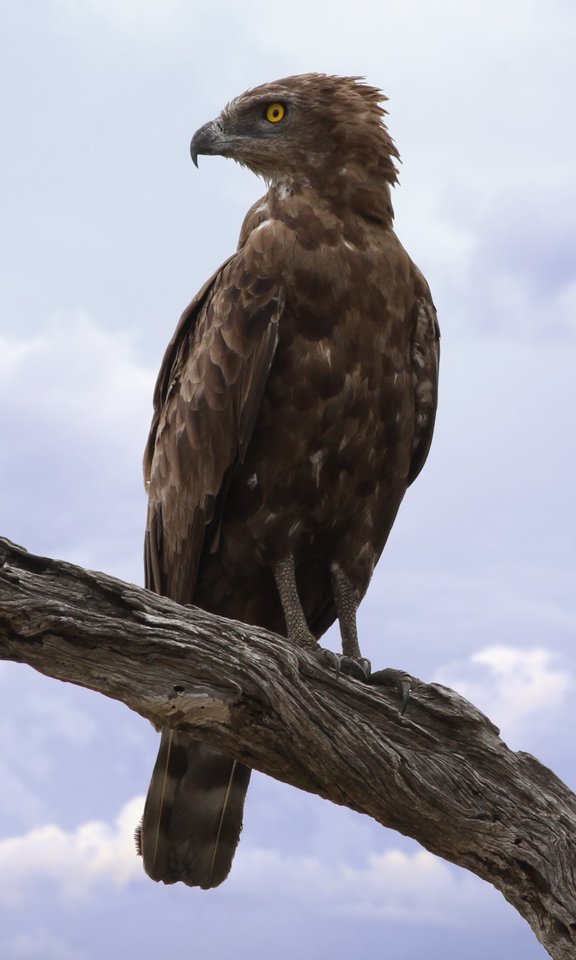The Brown Snake Eagle (Circaetus cinereus) is a large bird of prey that primarily feeds on snakes, including venomous ones. The female lays a single egg, which she incubates for around 7 weeks, while the male brings food to her at the nest. The hatchling takes to the wing for the first time when it is about 3 months old.
The Incubation Period
The Brown Snake Eagle’s egg hatches after about 50 days of incubation. During this time, the adults will line the nest with green foliage, which helps keep the egg and eaglet hidden and provides a soft surface for the eaglet to rest on.
Feeding the Eaglet
 Image source: Brown snake eagle By Derek Keats
Image source: Brown snake eagle By Derek Keats
The eaglet requires frequent feeding to grow and gain strength. The adults will bring food to the nest, ensuring the eaglet has the necessary nutrients to thrive.
Fledging and Independence
The eaglet will stay around the nest for 60-100 days before exploring branches along the perimeter, and it will fledge at 97-113 days. The juvenile brown snake eagle is completely independent a few weeks after fledging.
Physical Characteristics of the Brown Snake Eagle
The Brown Snake Eagle is a large bird of prey, with a total length of 66 to 78 cm (26 to 31 in) and a wingspan of 160 to 185 cm (5 ft 3 in to 6 ft 1 in). Known weights are between 1.5 and 2.5 kg (3.3 and 5.5 lb), with an average of around 2.05 kg (4.5 lb).
The Brown Snake Eagle has a large head and bare legs, which serve to distinguish it from other brownish medium-sized eagles in Africa. The body color extends to the wings but for their contrasting unmarked flight feathers which are whitish-grey. The shortish tail, which is most easily seen in flight, is at all ages barred brown and grayish cream.
Conservation Status and Lifespan
The brown snake eagle is a somewhat scarce and possibly declining species, with a typical lifespan of around 7-10 years. It is persisting fairly strongly over a range that includes 23.3 thousand square kilometers, and is therefore at least concern status for immediate conservation attention.
Conclusion
The Brown Snake Eagle’s egg hatching process is a fascinating and intricate part of its life cycle. From the incubation period to the eaglet’s fledging and independence, this bird of prey showcases the remarkable adaptations and behaviors that have evolved to ensure the survival of its species.
References:
– Global Raptor Information Network. 2021. Species account: Brown Snake Eagle Circaetus cinereus. Downloaded from http://www.globalraptors.org on 16 Aug. 2021
– Kemp, A. C. and J. S. Marks (2020). Brown Snake-Eagle (Circaetus cinereus), version 1.0. In Birds of the World (J. del Hoyo, A. Elliott, J. Sargatal, D. A. Christie, and E. de Juana, Editors). Cornell Lab of Ornithology, Ithaca, NY, USA. https://doi.org/10.2173/bow.brseag1.01
– The Peregrine Fund. 2021. Brown Snake-eagle. https://peregrinefund.org/explore-raptors-species/eagles/brown-snake-eagle
– Wikipedia. 2021. Brown snake eagle. https://en.wikipedia.org/wiki/Brown_snake_eagle

